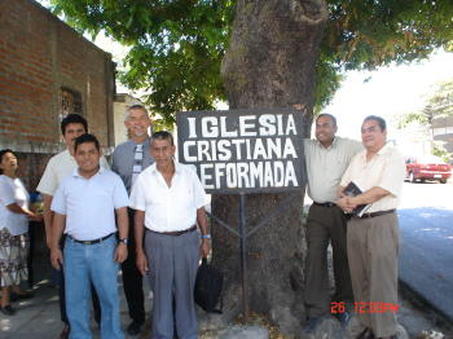The Home Page showed the Capitol, San Salvador; the above whimsical photo shows an idealized rural scene.
El Salvador could be a paradise…
THE COUNTRY The most densely populated country of Central America with its 7 million people, El Salvador is striving toward a better future. However, it suffers from the typical problems of a two sector economy, violence left over from the war as well as the gangs that have returned with youth that grew up in the U.S., a deforested countryside, and the overpopulated capital city, San Salvador. Multiple political parties used to vie for influence, but the two remaining are polarized right and left. In 2009 after 20 years in power, the rightists were replaced by the left (see “updates” tab). I was there to serve with the churches as an International Observer of the elections.
In the last presidential election, 2019, a younger candidate, Nayib Bukele, won with his “New Ideas” Party. While the jury is still out on his administration/ government, many say he is becoming more authoritarian. Owing to continual violence and gang activity, since mid-2022 the government has declared a “state of emergency” where thousands have been jailed. It seems to have the support of a majority of the population. Beside being on the dollar, they have introduced cryptocurrency as well, with mixed acceptance.
Religiously, Roman Catholicism is predominate (though now only just over 50% self-identify as such); it has conservative and progressive factions. The evangelicals – especially Pentecostals – have grown rapidly; a recent survey shows 38.2%. The CRC of ES can participate in this growth. This is the setting for ministry.
HISTORY The ES CRC is compromised of two hopeful congregations -one village (Huizucar*) and one city (Santa Tecla) – that date to mission work of nearly 40 years. It was government registered in 1979, and suffered through the long civil war and a split. Mention is made of the ES CRC and the Reformed Calvinist Church in the Family of Reformed and Presbyterian Churches, published by the World Council of Churches, Geneva. Their viability?!?…read on.
(For coverage in English of a wide range of information on El Salvador, go to the blog produced by Lutheran snowbird lawyer Tim Muth: www.ElSalvadorPerspectives.com)
My assignment was leadership development (Photo to the right)
LEADERSHIP Due to the war there was a great deal of discontinuity of mission presence. Leaders were poorly prepared, some failed, others defected. One could say that if it were not for the sacrificial unremunerated work of elder Samuel Montano (white shirt) the church would no longer exist. Finally in 2003 Rev. Carlos Mejia (second from right) became its first ordained minister. Jorge Ponce, (blue shirt and jeans) musician and caretaker finished his advanced theological studies making him eligible to teach religion in schools.
We left El Salvador at the end of 1995, but I have maintained involvement on a volunteer basis ever since for if you are interested in developments over the years, please see that history on the “Past Reports“ page.

ORIENTATION
A conscious Reformed self-understanding is growing in the leadership. Rev. Mejia looks to the Calvinistic heritage for his inspiration in doctrine and liturgy; he says “the Reformed faith is what my country needs to overcome its problems.” The ES CRC seeks to be a centrist presence and option among so many others in this conflictive and polarized society, taking “the full counsel of God” to the society.
RECENT INITIATIVES
From the Huizcuar church a new group has formed in the Canton of Maria Victoria, a hilly nearly half hour walk from town. With local effort and help from another former missionary they have a new building; pray for the leadership which is being developed. In Santa Tecla a music course is enriching the worship service and developing new musicians. Two Huizucar students have scholarships to study keyboard.
